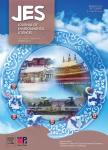Effect of substrate concentration on the bioleaching of heavy metals from sewage sludge
Effect of substrate concentration on the bioleaching of heavy metals from sewage sludge作者机构:DepartmentofEnvironmentalEngineeringZhejiangUniversityHangzhou310029China
出 版 物:《Journal of Environmental Sciences》 (环境科学学报(英文版))
年 卷 期:2004年第16卷第5期
页 面:788-792页
核心收录:
学科分类:083002[工学-环境工程] 0830[工学-环境科学与工程(可授工学、理学、农学学位)] 08[工学]
主 题:sewage sludge heavy metals bioleaching substrate fertilizer value
摘 要:The effect of elemental sulfur concentration on bioleaching of Cu, Zn and Pb and loss of fertilizer value from sewage sludge was investigated in flasks by batch experiments. The results showed that the ultimate pH of sludges with 3—5 g/L of sulfur added was about 1.3 and the production of SO 2- 4 had good correlation with the elemental sulfur concentration. The sensitivity of removal efficiency of metals to sulfur concentration was: PbCuZn. The sulfur concentration except for 3—5 g/L had significant effect on the solubilization of Cu, Pb and Zn. The highest solubilization efficiency for sludge with 3 g/L of sulfur was 87.86% for Cu, 32.72% for Pb and 92.14% for Zn, which could make the treated sludge easily meet the metal limitations for land application. The sulfur concentration of 3 g/L was enough for the solubilization of all three heavy metals. The influence of sulfur concentration on solubilization of total nitrogen and potassium from sludge was negligible, but that on solublization of total phosphorus was of great importance. The loss of nitrogen, phosphorus and potassium of sludge with 3 g/L of sulfur by bioleaching was 38.2%, 52.1% and 42.8% respectively, and the sludge still remained satisfactory fertilizer value after bioleaching.



